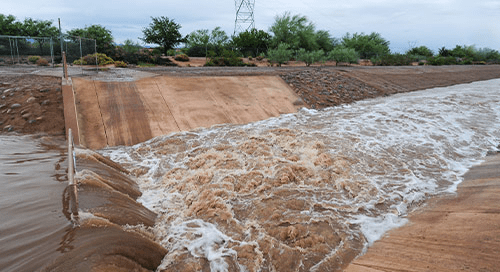Taking a break from the standard issue technical nature of blog posts, for this week I thought it would be a good time to review where we are today and to look ahead into the future of the infrastructure industry and make a few observations along the way.
As everyone likely knows, the government recently passed a substantial $1.2 trillion infrastructure bill (“Infrastructure Investment and Jobs Act” Public Law No: 117-58 (11/15/2021) ) that is purported to fund very much needed infrastructure improvements in the US. The bill states to provide new funding for infrastructure projects, including:
- roads, bridges, and major projects;
- passenger and freight rail;
- highway and pedestrian safety;
- public transit;
- broadband;
- ports and waterways;
- airports;
- water infrastructure;
- power and grid reliability and resiliency;
- resiliency, including funding for coastal resiliency, ecosystem restoration, and weatherization;
- clean school buses and ferries;
- electric vehicle charging;
- addressing legacy pollution by cleaning up Brownfield and Superfund sites and reclaiming abandoned mines; and
- Western Water Infrastructure.
The funding breakdown per category, by state and over time is a little murky, but the fact is that there will be additional federal funding injected into the infrastructure industry over the next several years. This government funding will almost certainly translate into additional business for most engineering, land development organizations and governing agencies. In short, the Infrastructure Investment and Jobs Act should provide a boost for the industry and the public and keep people busy for the next few years.
We can put this in the “Plus” category of industry trends, especially for organizations that work with government (States, Counties, Townships, Cities) as well as some collateral commercial development business.
Now, let us shift to the two consecutive quarters of negative GDP.
While some argue this does not mean we are technically in a recession, the fact is, the primary metric historically used to define a recession has come to be. What will this mean for the US economy and by extension, investments in private/commercial development and how will this impact the infrastructure/land development industry?
For example, in many parts of the country, housing has been on a manic run for a few years now and developers seemingly cannot build condos and apartments fast enough. How much longer will this trend continue, and what happens if the maybe-recession/negative GDP situation does not correct itself in the next several months? Will the commercial development segment of the industry slow, or even come to a near stop like we experienced in the late 2000’s?
One of the lessons learned by the industry after the recession of the late 2000’s was that being diversified was important for success and for some, important for the survival of the business. Many organizations that were heavily, or in some cases almost entirely vested in commercial development saw their business come to a screeching halt. And while not completely unaffected, organizations that were vested in government (DOT, Municipal, etc.) fared the recession better due to the nature of government projects and its moderate insulation to economic volatility.
Since the late 2000’s one of the “Lessons learned” was that for many, having a diverse portfolio of clients, consisting of both commercial and government, has proven to provide a more pragmatic balance and degree of stability.
What does all of this mean for the foreseeable future of the industry?
- Will the Infrastructure spending actually come to fruition in a meaningful way, and will it be enough to sustain the industry through the prospect of a cooling economy?
- Will we see commercial development slow or come to a standstill again?
- Will the GDP numbers rebound and keep us from an economic downturn, and will the resulting commercial development work be piled on top of the new surge of government infrastructure spending, thus pushing the industry further into overdrive?
While it’s difficult to say what the next few quarters or years may look like for the infrastructure/engineering industry, we do know that things will almost certainly change (change being the only constant). Are organizations looking ahead to what may be coming and preparing accordingly, or is everyone too busy getting work done and are heads down and hoping for the best?
Simply put, at IMAGINiT our business is supporting your organization. In addition to providing technology and implementation solutions, we also work hard to be proactive and to look ahead into what’s coming, and to understand how through process, technology, education, collaboration, support, we can help our clients to weather whatever storm lands at their feet.
A recent example would be the pandemic lockdowns and the sudden and unplanned need for people to collaborate remotely to keep projects moving forward. IMAGINiT partnered with clients throughout the US and Canada to help them take advantage of technologies and workflows that would enable them to keep people working and to keep projects moving forward with minimal disruption.
Hopefully we will not have to endure anything like that again anytime soon, but as noted, change is coming, and when you need help navigating it, consider partnering with IMAGINiT Technologies. Our business is helping organizations meet new challenges, whether it come in the form of an overwhelming amount of new and possibly different work, or something undesirable, but nonetheless real.
About the Author
Follow on Linkedin More Content by Kevin Breslin





















